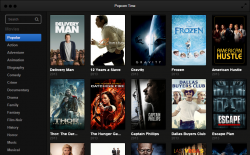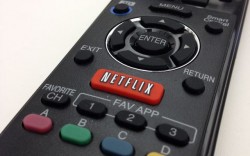Welcome to the second half of 2015. It was a very quiet week news wise, at least on Digital Digest. Part of the reason is that a lot of streaming related news are now being published on my Streambly site, so feel free to follow it (on Facebook, Twitter and Google+) if you want to see more news stories, although of course, I will always include relevant stories from Streambly in this roundup.
So yesterday was the 4th of July, and normally that’s just another Saturday here in Australia, but here at Digital Digest HQ, celebrations were afoot. Yesterday was the 16th birthday of Digital Digest, first launched in 1999 as DVDDigest (clicky here to see what it looked like then). Personally, it’s been a great 16 years designing, creating and taking care of this site, and here’s to another 16 years!
Here’s the news for the week …
![]()
A new piracy epidemic is happening in Norway, and it’s all because of an open source tool, at least according to rights-holder groups in the country. Norway was in the news a while back for having all but eliminated music piracy (thanks to iTunes, Spotify and other legal alternatives that people actually wanted to use), but at the same time, movie and TV piracy has been increasing, particularly streaming related piracy. This has the Rights Alliance Norway, an anti-piracy outfit from the country, blaming open source tool Popcorn Time for making it too easy for users to download and streaming movies. The Rights Alliance Norway is now threatening to sue people who use Popcorn Time, as well as ISPs who do not cooperate with blocking content.
It’s quite disappointing to see this kind of reaction in Norway after the clear solution to the piracy problem has already been demonstrated successfully in regards to music piracy. Instead of blaming Napster or LimeWire and suing people who use these tools, iTunes and Spotify and others legal platforms helped to give people, those that weren’t willing to pay and those that were only willing to pay at the right price (and if they got to use the content in the way they wanted), another way to get their content. So the solution to the movie and TV piracy problem is simple – give the people what they want. Netflix is a good start, but it probably has less than 5 percent of the content that people actually want. There has to be a way to allow people to watch the latest TV shows, and movies, without forcing them to spend hundreds of dollars every month – something that people don’t see as good value (or simply can’t afford).
The problem has been identified. Now, we wait for the solution.
![]()
Even though Netflix clearly doesn’t have close to enough of the sort of content people actually want, they do still have a lot of content. For me, people either pirate because they really want something and can’t afford it, or they’re after something they would never want to pay for, but still want to have a look. Netflix satisfies the latter of these demands, but barely touches the first (Netflix Originals do help).
But still, being able to give people something random to watch when they’re not looking for anything specific can, and does help to reduce piracy, which is why Netflix is so popular. So popular in fact that by the year’s end, Netflix may have as many as 70 million subscribers worldwide. To put that number into perspective, despite HBO Now being one of the top 10 apps on the Apple App Store, it still only has about one million subscribers – which is actually a pretty decent start, but obviously nowhere near Netflix’s numbers.
Unsurprisingly, most of Netflix’s growth is happening outside of the US, with 9.6 million new subscribers expected by the end of 2015, up 57%. So while most Netflix subscribers are currently located in the U.S. (43.5 million), it’s only a matter of time before that’s no longer true (especially if Netflix’s launch in India, Japan and China are successful).
And it’s not just subscription video streaming that’s big business these days, thanks to Apple Music’s introduction, revenue from subscription music streaming is expected to become one-third of all consumer music spending by 2016 (it’s currently at 16%).

Listening to music on smartphones, and in offline mode, are main reasons people want to subscribe to Apple Music
While what Apple Music offers, compared to Spotify, isn’t all that new or better, but what Apple brings to the table is mainstream acceptance, and a large user base from its iTunes stores, a user base that the company is apparently willing to cannibalize. There will be many users that will switch from purchasing tracks on iTunes to unlimited streaming on Apple Music, which in the short term could actually cost Apple (and the music industry) money. But in the long term, subscription streaming is where music is headed, and it’s the only affordable way for users to get access (legally) to 30 million tracks.
——
So that’s it for this not-so-special birthday edition of the WNR. See you next week!



